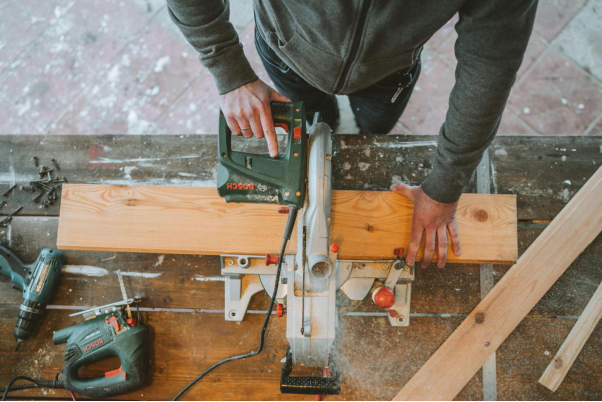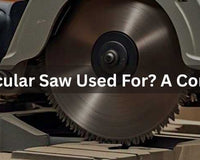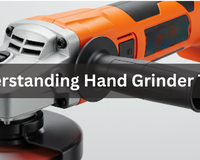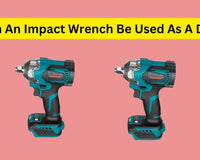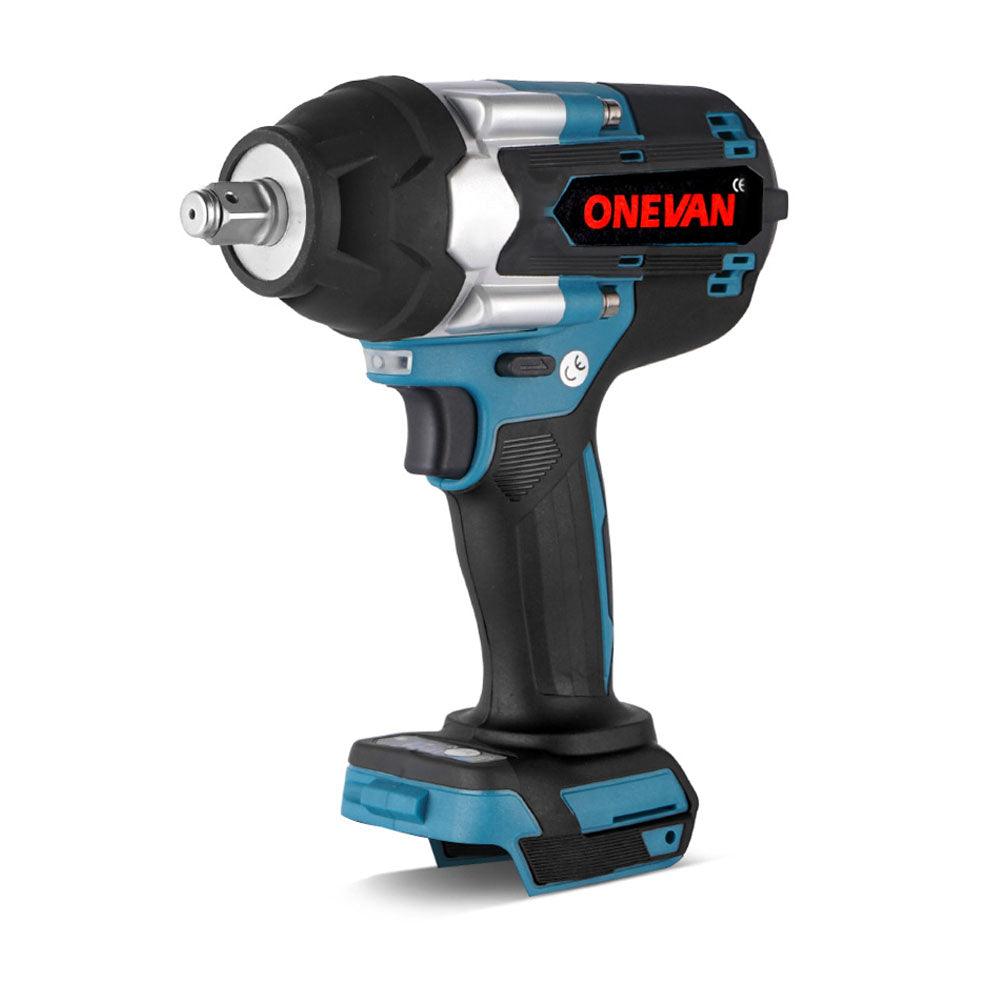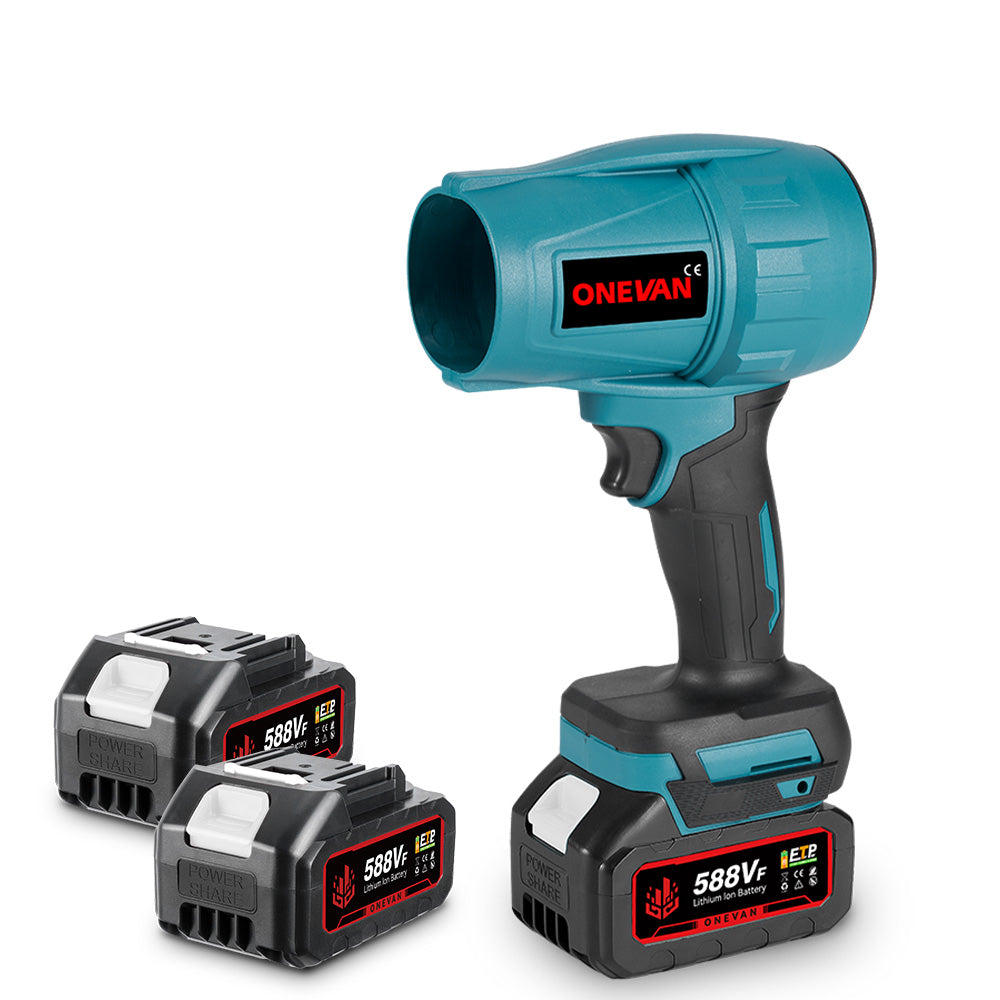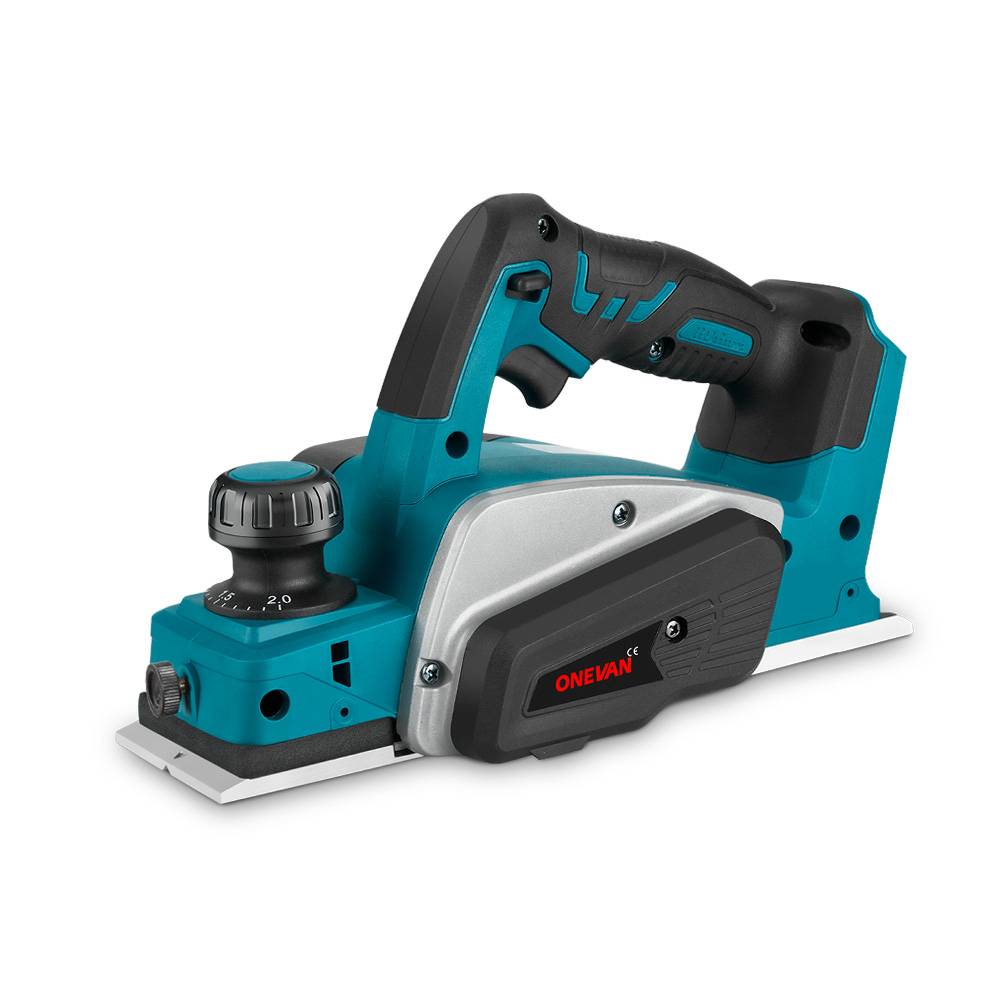1. ¿Qué es una sierra alternativa?
La hoja de una sierra recíproca se mueve linealmente, cortando diversos materiales. Gracias a su rápido movimiento en línea recta, corta madera, metal, plástico e incluso mampostería. Esto se conoce como reciprocidad. Muchos conocen esta herramienta por su velocidad y utilidad, especialmente para trabajos donde la velocidad y la accesibilidad son más importantes que la precisión.
La sierra alternativa, también conocida como sierra de sable o sierra de vaivén, es duradera y útil para remover, remodelar y reparar. Su hoja lisa y su pequeño tamaño le permiten adaptarse a espacios reducidos, lo que la hace ideal para dar forma a placas de yeso y ramas de árboles.
Tipos de sierras recíprocas
Los dos tipos principales de sierras son las sierras recíprocas con cable y las inalámbricas . Cada estilo se adapta a diferentes usuarios y lugares de trabajo.
Sierra alternativa con cable
Las sierras recíprocas con cable necesitan una toma de corriente. Como la potencia se mantiene constante, no hay que preocuparse por el nivel de batería, lo que las hace ideales para trabajos intensivos. Se utilizan en obras de construcción con cortes largos. El cable puede limitar la movilidad y requiere una toma de corriente, que puede ser menos práctica que las opciones inalámbricas, pero proporciona un suministro de energía constante.
Sierra alternativa sin cable
Las sierras recíprocas inalámbricas utilizan baterías recargables para una mayor portabilidad. Son ideales para proyectos pequeños o remotos sin enchufes. Los modelos modernos, como la sierra recíproca inalámbrica ONEVAN, suelen utilizar baterías de iones de litio, que ofrecen mayor densidad energética y eficiencia, aunque la duración de la batería puede variar según el uso.
Sin embargo, la duración de la batería puede limitar su uso, aunque muchos modelos modernos incorporan tecnología avanzada para una mayor autonomía. Pueden ser utilizados por profesionales y aficionados al bricolaje que buscan flexibilidad sin sacrificar potencia.
2. ¿Cómo funciona una sierra alternativa?
Mecanismo de acción de la sierra alternativa
La sierra reciprocante corta de forma sencilla pero eficaz. En esencia, la sierra mueve la hoja en vaivén mediante la rotación del motor. Gracias a su velocidad, la hoja corta los materiales con agresividad, en lugar de crear cortes suaves como los de una sierra circular.
El motor y el sistema de accionamiento lo hacen posible. El motor hace girar una manivela o un mecanismo de leva para impulsar la hoja hacia adelante y hacia atrás, alcanzando a menudo velocidades de entre 2500 y 3000 golpes por minuto al accionar el gatillo. La sierra es ideal para operaciones de extracción donde la velocidad y los cortes bastos son más importantes que la precisión.
Muchas sierras inalámbricas utilizan motores sin escobillas para mayor eficiencia y reducción del calor. Las sierras inalámbricas equipadas con motores sin escobillas permiten altas velocidades de carrera y un mejor ahorro de batería. Sirven para diversos propósitos y son portátiles.
Componentes clave de una sierra alternativa
Comprender las secciones principales de una sierra alternativa le ayudará a comprender su funcionamiento y valor:
- Motor: El motor acciona la cuchilla. En muchas versiones inalámbricas modernas, una batería recargable alimenta un motor eléctrico sin escobillas para una mayor eficiencia.
- Abrazadera de la hoja: Sujeta la hoja. Muchos modelos modernos de sierras recíprocas incorporan un sistema de cambio de hoja sin herramientas, lo que permite cambiar la hoja rápidamente.
- Gatillo: Controla el funcionamiento de la sierra. Algunos gatillos varían la velocidad de recorrido según la fuerza con la que se presionen.
- Mango y empuñadura: Su mango y empuñadura son cómodos y fáciles de usar. Las características antivibración de la mayoría de los modelos evitan la fatiga de las manos tras un uso prolongado.
- Una zapata (placa pivotante) mantiene la cuchilla estable y a la profundidad adecuada contra el material que se corta. Además, reduce el rebote y los saltos de la cuchilla.
Estos elementos trabajan en conjunto para garantizar el correcto funcionamiento de la sierra alternativa en situaciones exigentes. Comprender el funcionamiento de las piezas hace que una sierra alternativa con cable o portátil sea más segura y eficaz.
3. Aplicaciones de la sierra alternativa
Materiales comunes que puedes cortar
Una sierra recíproca, una de las herramientas de corte más versátiles, puede cortar diversos materiales, como madera, metal, plástico y mampostería, según el tipo de hoja utilizado.
- Ideal para cortes gruesos, ramas de árboles y madera para marcos.
- Con herramientas específicas para metal, corta tubos, clavos y chapas.
- Las placas de yeso son fáciles de cortar para realizar renovaciones rápidas o demoliciones.
- Las hojas de carburo cortan ladrillos, placas de cemento y baldosas.
Una sierra alternativa con cable o portátil debe tener el tamaño de hoja correcto para el material para realizar cortes limpios y seguros.
Casos de uso específicos
Muchos proyectos de construcción, plomería y paisajismo emplean sierras recíprocas debido a su versatilidad y eficiencia para cortar diversos materiales. Ejemplos de usos populares:
- Proyectos de demolición: Estas sierras son perfectas para demoler paredes, marcos de ventanas y edificios antiguos. Incluso en condiciones difíciles, su filo afilado y su pequeño tamaño facilitan su uso rápido.
- Trabajos de plomería y electricidad: El cuerpo delgado y la movilidad de la herramienta le permiten cortar tuberías o placas de yeso detrás de fregaderos o entre paredes.
- Jardinería y paisajismo : Las sierras recíprocas inalámbricas podan árboles, cortan raíces gruesas y dan forma a las plantas. La eliminación de cables simplifica las tareas al aire libre.
Pequeña y ligera, la sierra sable inalámbrica ONEVAN es ideal para estas situaciones. Su potente motor corta por dentro y por fuera.
Ventajas sobre otras herramientas
Varias características distinguen a la sierra alternativa:
- Versatilidad : una sierra alternativa con muchas opciones de hojas puede reemplazar a otras.
- Accesibilidad : El diseño largo y delgado permite alcanzar fácilmente espacios estrechos o bloqueados.
- Velocidad : Corta rápidamente, especialmente al desgarrar o hacer cortes bastos.
- Fácil de usar : requiere poca configuración y es sencillo de operar, incluso para principiantes.
Una sierra alternativa destaca por su movilidad, velocidad y accesibilidad, lo que la hace ideal para cortes bastos. Las sierras circulares y de calar suelen ser más adecuadas para cortes de precisión.
4. Cómo elegir la sierra alternativa adecuada
Factores clave a considerar al usar una sierra alternativa
Elija la sierra alternativa adecuada según las necesidades de su trabajo y su espacio de trabajo. Estos son los puntos clave:
- Potencia de salida: Las sierras recíprocas inalámbricas se clasifican por voltaje (normalmente 18 V o 20 V), mientras que las sierras con cable se clasifican generalmente por amperaje y potencia, lo que indica su potencia de salida: más cortes, materiales más duros, más rápido y más limpio. Una sierra con cable de 10 a 12 amperios o una sierra portátil de 20 V son las más adecuadas para trabajos más pesados.
- Longitud de carrera: La velocidad de corte se ve afectada por la longitud de carrera, es decir, la distancia que recorre la hoja en una pasada. La mayoría de las sierras tienen carreras de entre 1,27 cm y 3,18 cm. En muchos casos, carreras más largas pueden mejorar la eficiencia de corte, eliminando más material en una sola pasada.
- Peso y ergonomía: Una sierra ligera es más fácil de operar de pie o durante largos periodos. Muchas sierras recíprocas modernas incorporan mangos antideslizantes, empuñaduras ergonómicas y una distribución optimizada del peso, lo que facilita su manejo.
- Duración de la batería (solo inalámbrica): Los Ah de una sierra sable inalámbrica indican su autonomía. Una batería de iones de litio alimenta la sierra sable inalámbrica ONEVAN durante largos periodos.
Características adicionales de la sierra alternativa que mejoran su uso
Varias mejoras hacen que las sierras alternativas modernas sean más fáciles de usar y más cómodas y efectivas:
- La velocidad de corte variable le brinda mayor control sobre diferentes materiales. Comience suavemente y acelere lentamente para obtener cortes precisos.
- Las luces de trabajo LED integradas iluminan espacios oscuros o estrechos, mejorando la precisión y la visibilidad.
- La tecnología antivibración reduce la fatiga de las manos y mejora la comodidad.
- Los usuarios pueden cambiar las cuchillas sin herramientas, lo que agiliza el trabajo con múltiples materiales.
5. Cómo utilizar una sierra alternativa de forma eficaz
Guía paso a paso para usar una sierra alternativa
Si utiliza una sierra alternativa correctamente, durará más y tendrá un mejor rendimiento. Pasos para un procesamiento seguro y eficaz:
Elige la cuchilla adecuada
- La selección de la hoja depende del material que esté cortando:
- Sierras de madera para cortar árboles y arbustos.
- Las hojas de metal y de clavos están compuestas de dos metales.
- Hojas de carburo para mampostería.
Inserte la cuchilla correctamente
Utilice la abrazadera sin herramientas si está disponible. Asegúrese de que los dientes estén orientados en la dirección correcta, lejos de la herramienta y hacia el corte.
Asegurar el material
Utilice la abrazadera de material o sujete firmemente la pieza para evitar que se mueva. Un material demasiado abierto puede atascar o hacer retroceder la cuchilla.
Establezca la velocidad y comience a cortar
Utilice el gatillo de velocidad ajustable para acelerar lentamente. Instale la cuchilla y déjela funcionar.
Mantener el control y la precisión
- Utilice ambas manos para mantener la estabilidad.
- Apoye la zapata (placa base) contra la superficie para reducir la vibración.
- Siga la línea de corte de manera constante sin forzar la cuchilla.
Pautas de seguridad para sierras alternativas
La seguridad es crucial porque las hojas de sierra recíproca se mueven rápidamente y pueden causar lesiones graves si no se manipulan correctamente. Recuerde estos consejos de seguridad:
- Utilice equipo de seguridad.
- Las gafas de seguridad protegen tus ojos.
- Guantes resistentes a cortes para la seguridad de las manos.
- Utilice máscaras antipolvo al cortar piedra o yeso.
- Mire alrededor del lugar de trabajo y verifique que no haya cables, clavos y líneas de servicios públicos antes de cortar para evitar dañarlos o causar lesiones.
- Nunca gire la hoja de sierra durante el corte. Deje que la herramienta alcance la velocidad máxima antes de tocar la sustancia.
- Apague la unidad y retire la batería antes de cambiar las hojas de la sierra eléctrica.
6. Errores comunes de la sierra alternativa y cómo evitarlos
Una sierra alternativa requiere más que encenderla y cortar. Muchas personas cometen errores que dañan la herramienta o ponen en peligro a otras personas. Saber cómo prevenir estos problemas comunes puede ayudarle a cortar mejor, manejar las herramientas correctamente y prolongar su vida útil.
El atascamiento de la cuchilla y cómo prevenirlo
Un problema común con las sierras recíprocas es que la hoja se atasca en la superficie. Esto ocurre con frecuencia al cortar materiales gruesos o curvos o al utilizar un procedimiento incorrecto. Las hojas atascadas pueden dañar el motor o detenerlo. Evite esto cortando de forma recta y constante. No tuerza ni fuerce la sierra a través de la tela. Mantenga la base de la sierra presionada contra la superficie. Esto reducirá la vibración y mejorará el corte de la hoja. Utilice la hoja adecuada para cada trabajo. Por ejemplo, una hoja de madera contra metal podría atascarse y romperse.
Comprender y evitar el soborno
El contragolpe de las sierras recíprocas también es perjudicial. Suele ocurrir cuando la punta de la hoja toca algo o el material se mueve rápidamente durante el corte. Dado que la sierra se sacude hacia atrás inesperadamente, puede perder el control. Sujetar el material antes de cortar reduce el contragolpe. Deje que la hoja aumente la velocidad antes de tocarla. Mantenga ambas manos en la sierra. La empuñadura robusta y el cuerpo bien equilibrado de la sierra recíproca inalámbrica ONEVAN permiten a los usuarios mantener el control al cortar en ángulo o por encima de la cabeza.
Reducir la fatiga para un mejor control
El uso prolongado de la sierra alternativa, especialmente en trabajos difíciles, lo cansará. Esto reduce la precisión y aumenta el riesgo de accidentes. Para evitar la fatiga, corte con equilibrio y haga pausas durante sesiones prolongadas. Sostener la herramienta demasiado lejos puede lesionarle los brazos y los hombros. Manténgala cerca y deje que el peso de la sierra le ayude. Elegir un dispositivo ligero y cómodo le permite trabajar durante más tiempo sin cansarse. Su tamaño compacto y la baja intensidad de vibración facilitan su agarre y reducen la tensión corporal, lo que lo hace adecuado para un uso prolongado.
7. Tipos de hojas de sierra recíproca
El rendimiento de una sierra rotativa depende de la hoja. Diferentes tareas y materiales requieren distintos diseños de hoja para cortes suaves, seguridad y prevención de daños. Conocer los tipos de hoja ayuda a prolongar la vida útil de la herramienta, ya que garantiza la selección de la hoja adecuada para el material y reduce el desgaste de la sierra.
Hojas para cortar madera
Los pasos de diente anchos (TPI) y los dientes afilados son típicos de las hojas para cortar madera. Los TPI más pequeños (5-8) cortan maderas blandas, madera tosca y madera verde con mayor rapidez. Estas hojas suelen ser largas para cortes profundos. Los dientes en forma de rastrillo eliminan el serrín rápidamente y lo mantienen fresco. Durante la demolición de un edificio, se pueden enmarcar, podar o cortar montantes de madera.
Hojas para cortar metal
Los dientes de las hojas para cortar metal suelen ser de 14 a 24 TPI, lo que resulta en cortes más suaves y menos vibración. Gracias a sus puntas bimetálicas, de cobalto o carburo, estas hojas ofrecen mayor durabilidad al cortar tubos, pernos y chapa metálica de acero. Sus dientes más pequeños reducen el atascamiento y la rotura, especialmente con metales más delgados. Son necesarias para plomería, automóviles y metalistería.
Cuchillas de destrucción
Las cuchillas de demolición están diseñadas específicamente para uso intensivo al cortar materiales mixtos. Suelen contar con diseños reforzados para soportar tareas de corte rigurosas. Son más grandes y resistentes que las cuchillas convencionales para evitar que se doblen y rompan.
Estas hojas están diseñadas para cortar madera y metal, lo que las hace ideales para tareas de demolición. Pueden tener dientes reforzados y un paso de diente variable para cortar madera con clavos, placas de yeso con tornillos o yeso. Se utilizan en renovaciones que requieren el corte rápido de diversos materiales.
Hojas de mampostería
Las hojas de mampostería no suelen tener dientes tradicionales; en su lugar, utilizan un filo continuo de diamante para cortar materiales duros como hormigón, ladrillo y piedra. Estas herramientas permiten recortar placas de cemento, eliminar juntas de mortero antiguas y mucho más. Debido a su construcción, generan mucho polvo; por lo tanto, deben utilizarse con suficiente ventilación y mascarilla.
La sierra recíproca inalámbrica ONEVAN es compatible con todo tipo de hojas. Su potente motor y su sistema de cambio rápido de hojas la hacen versátil para trabajos en madera, metalistería, demolición y mampostería.
8. Solución de problemas de su sierra alternativa
Incluso las mejores sierras recíprocas pueden presentar problemas con el tiempo. Aprender a identificar y solucionar problemas comunes puede ahorrar tiempo y evitar mayores daños a la sierra, garantizando un funcionamiento eficiente.
La sierra alternativa no arranca
Si la sierra no arranca, revise la fuente de alimentación. Asegúrese de que las sierras con cable tengan las baterías cargadas y que los cables estén correctamente instalados. Revise el gatillo y el fusible o disyuntor.
La hoja de sierra alternativa está atascada
La suciedad o los materiales pesados pueden obstruir una hoja atascada. Apague siempre la sierra antes de retirar la hoja. Si dispone de guantes y el método de extracción de la hoja sin herramientas, podrá retirarla e inspeccionarla.
Bajo rendimiento de la sierra alternativa
Las cuchillas desafiladas o las baterías bajas reducen la eficiencia de corte. Reemplace las cuchillas y baterías desgastadas. El polvo en los respiraderos del motor puede sobrecalentarlo y dañarlo.
Vibración excesiva de la sierra alternativa
Si su sierra vibra más de lo habitual, revise la instalación de la hoja. Las piezas sueltas o los rodamientos desgastados podrían causar desequilibrio. Si es necesario, limpie y repare cualquier elemento.
9. Mantenimiento de la sierra alternativa para una mayor durabilidad
El mantenimiento regular garantizará el buen funcionamiento de su sierra recíproca. Siga estos pasos para optimizar el rendimiento y la vida útil de su herramienta:
- Limpie la sierra después de cada uso para eliminar el polvo. Mantenga la máquina fría limpiando las rejillas de ventilación y evitando que el agua dañe las piezas interiores.
- Revise las cuchillas con frecuencia para detectar si están desafiladas o faltan dientes. Un reemplazo rápido mantendrá la precisión de corte y reducirá la tensión del motor.
- Engrase las piezas móviles con el aceite recomendado por el fabricante. Mantenga la sierra seca y sin polvo para su mantenimiento. Es recomendable guardar la sierra en un estuche protector cuando no se utilice para evitar daños y garantizar su seguridad.
10. Conclusión
Una sierra recíproca es una herramienta potente y versátil que simplifica los trabajos de corte en construcción, demolición, plomería, paisajismo y otras aplicaciones, como renovaciones de viviendas y reparaciones de automóviles . Ya sea con o sin cable, el modelo adecuado puede mejorar drásticamente su flujo de trabajo. Puede obtener cortes limpios y rápidos siempre eligiendo la hoja adecuada, utilizando técnicas seguras y comprendiendo las características de la herramienta eléctrica .

